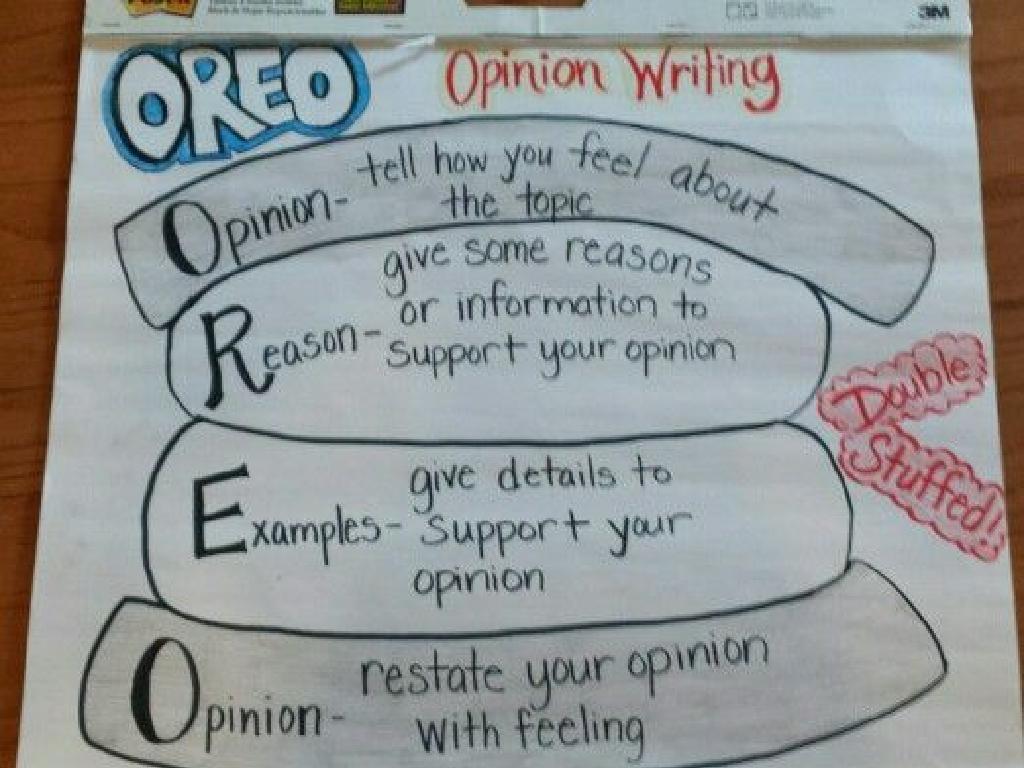Solve Inequalities With Decimals: Variables On Both Sides
Subject: Math
Grade: Eighth grade
Topic: One-Variable Inequalities
Please LOG IN to download the presentation. Access is available to registered users only.
View More Content
Solving Inequalities with Decimals
– Understanding inequalities
– An inequality shows the relationship between two values that are not equal.
– Recap: One-variable inequalities
– Review of solving inequalities with one variable, like x < 5.
– Focus: Inequalities with decimals
– Today, we'll tackle inequalities that include decimal numbers.
– Solving steps for decimal inequalities
– We'll use similar steps as one-variable inequalities but with added precision for decimals.
|
Begin with a brief explanation of what inequalities are and how they show the relationship between values that are not equal. Recap the previous lessons on one-variable inequalities to ensure students have a solid foundation. Today’s lesson will focus on solving inequalities that include decimals, which is a bit more challenging due to the precision required with decimal numbers. Emphasize the importance of keeping the inequality balanced as they perform operations on both sides. Provide examples and practice problems that involve adding, subtracting, multiplying, and dividing by decimal numbers within inequalities. Encourage students to ask questions and work through problems step-by-step.
Understanding Decimals in Inequalities
– Review decimal place values
– Decimals have place values tenths, hundredths, etc.
– Comparing decimals and whole numbers
– Decimals are fractions of whole numbers
– Real-life decimal examples
– Money uses decimals: $3.75, measurements: 5.2 cm
– Decimals in inequalities
– Variables on both sides with decimals: 3.5x > 7.2
|
Begin with a quick review of decimal numbers, emphasizing their place values such as tenths, hundredths, and so on. Highlight how decimals are essentially fractions of whole numbers, which can help students understand their value relative to whole numbers. Provide relatable examples such as money and measurements to illustrate the use of decimals in everyday life. Then, transition to how these concepts apply to solving inequalities with variables on both sides that include decimal values. Encourage students to think of decimals as another form of numbers that follow the same rules as whole numbers when solving inequalities.
Solving Decimal Inequalities with Variables on Both Sides
– Reading & writing decimal inequalities
– Translate inequalities with decimals into words and vice versa, e.g., 3.5 > x means ‘three point five is greater than x’.
– Maintaining balance in inequalities
– Like equations, altering one side of an inequality requires the same change to the other side to keep it true.
– Understanding variables on both sides
– Variables on both sides means the unknown, x, appears on both sides of the inequality sign.
– Solving step-by-step examples
– Use inverse operations to isolate x and solve, e.g., if 0.5x + 1.2 > 0.3x + 1.4, subtract 0.3x from both sides.
|
This slide introduces students to the concept of solving inequalities that include decimal numbers and variables on both sides. Start by explaining how to read and write inequalities with decimals, emphasizing the importance of understanding the symbols and their meanings. Highlight the critical concept of maintaining balance when solving inequalities, just as with equations. Clarify what it means to have variables on both sides of the inequality and how it affects the solving process. Provide step-by-step examples to demonstrate how to isolate the variable and solve the inequality, ensuring to perform the same operations on both sides to maintain balance. Encourage students to practice with additional examples and reinforce the concept that the inequality sign points to the smaller value.
Solving Decimal Inequalities Step by Step
– Isolate the variable on one side
– Combine like terms to simplify the equation
– Align decimal place values
– Ensure decimals are correctly aligned for addition or subtraction
– Understand operations that flip the sign
– Multiplying or dividing by a negative number reverses the inequality
– Practice with example inequalities
– Solve 2.5x + 3.1 > 1.6x – 2.4 and discuss the steps
|
This slide introduces students to the process of solving inequalities that include decimals and variables on both sides. Start by isolating the variable, which may involve combining like terms. Emphasize the importance of aligning decimal place values when adding or subtracting decimals. Highlight that multiplying or dividing both sides of an inequality by a negative number will flip the inequality sign. Provide an example inequality for students to solve, such as 2.5x + 3.1 > 1.6x – 2.4, and walk through each step, ensuring students understand the reasoning behind each operation. Encourage students to practice with additional problems to reinforce their understanding.
Solving Decimal Inequalities with Variables on Both Sides
– Example problem walkthrough
– Let’s solve 3.5x + 4.2 d 5.1x – 2.3
– Move variables to one side
– Subtract 3.5x from both sides to isolate variables
– Solve the inequality
– Divide by the coefficient to find x
– Check the solution
– Substitute x back into the original inequality to verify
|
This slide is aimed at guiding students through the process of solving inequalities that include decimals and variables on both sides. Start with a clear example, such as 3.5x + 4.2 d 5.1x – 2.3, and demonstrate each step. Emphasize the importance of maintaining balance by performing the same operation on both sides of the inequality. Once the variables are on one side, show how to isolate the variable by dividing by the coefficient. Finally, stress the importance of checking the solution by substituting the value of x back into the original inequality to ensure it holds true. Provide additional practice problems for students to work through independently, ensuring they grasp the concept.
Practice: Solving Decimal Inequalities
– Solve the given inequalities
– Apply the step-by-step method
– Remember to isolate the variable on one side
– Document your solution process
– Write down each step as you solve
– Prepare to discuss your methods
– Think about why you chose each step
|
This slide is designed to encourage students to apply the step-by-step method for solving inequalities with variables on both sides, which includes distributing, combining like terms, and isolating the variable. Provide a set of inequalities with varying levels of complexity to cater to different skill levels within the class. Encourage students to write down each step to reinforce the process and to be prepared to explain their reasoning during the next class. This practice will help solidify their understanding and give them the confidence to tackle similar problems independently.
Class Activity: Inequality Challenge
– Form small groups for problem-solving
– Solve complex inequalities together
– Focus on inequalities with decimals and variables on both sides
– Each group presents their solution
– Discuss various strategies used
– Compare different methods and learn from each other
|
This activity is designed to foster collaboration and peer learning among students. Divide the class into small groups and assign each a complex inequality with decimals and variables on both sides. Encourage students to work together to find the solution, ensuring that each member understands the process. After solving, each group will present their approach to the class, explaining their reasoning and the steps they took. Conclude the activity with a class discussion on the different strategies used, highlighting the benefits of various approaches. This will help students see the diversity of methods that can be applied to solving inequalities and reinforce their understanding of the topic.
Wrapping Up: Inequalities with Decimals
– Recap key inequality concepts
Remember to isolate the variable, and flip the sign when multiplying or dividing by a negative.
– Homework: Inequality worksheet
Complete the provided worksheet focusing on decimal inequalities with variables on both sides.
– Practice is key to mastery
Extra practice can solidify your understanding, try additional problems at home.
– Next class: Q&A session
|
As we conclude today’s lesson on solving inequalities with decimals, it’s important to remind students of the main concepts: isolating the variable on one side and the rules for flipping the inequality sign. The homework assignment is a worksheet designed to reinforce these concepts. Encourage students to practice further at home, emphasizing that mastery comes with practice. Prepare for the next class by reviewing the homework and be ready to answer any questions students may have, ensuring they have a solid understanding of the topic.






